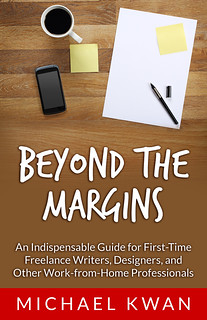Last week, I mentioned I had a strategy of using whole life insurance as leverage. This strategy is the reason that every multi-millionaire and billionaire has purchased loads of whole life insurance over the course of their careers. It’s a strategy that’s simple to understand and accessible to every entrepreneur. It’s called the “corporate asset transfer.”
Let’s Set The Stage With Taxes
When you’re incorporated, the revenue you make is immediately taxed 13.5%. Those are taxes you can’t avoid, no matter what. While that money is in your corporation, you can access it in four ways.
- First, you can pay yourself an income and get taxed at your marginal tax rate. This is probably the least efficient way of doing it. The only benefit is that if you pay yourself an income, you get RRSP contribution room, EI (employment insurance) and CPP.
- The second way is to sell the business. If you did this, you would pay capital gains taxes. These are nice since only 50% of the gain is taxed. So, for example, if you invested $1 million into your business and it grew to being worth $3 million, you would then have a growth of $2 million. Half of that $2 million would be taxed at your marginal tax rate.
- The third way is to pay yourself a dividend. This is the most favorable way to do it, since the amount you pay is based on the gross-up and also the dividend tax credit you get from the government.
- The fourth way is to launder your money, but we’re not going there.
So, most entrepreneurs keep their money in their corporation to avoid paying that tax. While it’s sitting there, they may as well invest it since it’s doing nothing. 1% is better than 0%, after all. This makes perfect sense and everyone in business would be investing their retained earnings as long as they don’t have any immediate expenses for the money.
The thing that bothers a lot of them is that the gains made on investments of corporate earnings are taxed at a rate of 44.5%. That’s a LOT! If you invest $1 million and make a 10% gain ($100,000), you’re only making about half of that since the other half is going to taxes.
Whole Life Insurance To Save The Day
Whole life insurance, as we know by now, is insurance with an investment component to it. That investment component can be grown, tax sheltered like an RRSP or a TFSA. There are a lot of great insurance companies out there that do this and the top-tier have consistently paid up returns of 7-8%. London Life, in particular, has had a laser beam-like consistent growth for over 130 years. Even through the great depression, both world wars, the tech bubble, 9/11 and so on.
So, we got this insurance policy. What do we do with it? We buy key person insurance. It’s a business-specific insurance need that will make your investment premiums a tax deduction. The amount we put in is based on how much money we have in our company that we want to take out. We divide that amount by a monthly premium. So, the premiums are paid for with tax-free dollars, the premiums themselves are a tax deduction and the growth is also tax-free…
The Fun Part
Now, what do we do with the life insurance policy that’s growing steadily? We use that as leverage.
Life insurance is looked upon as one of the most favorable forms of collateral, since the payout is guaranteed. Let’s assume the cash value of our life insurance policy has grown to about $2 million. You then work out a number for yourself of how much money you need for living expenses each year. Rather than taking money out of your life insurance policy, you simply take out a line of credit backed against the cash value of the life insurance policy.
Let’s say you want to have $100k a year. You simply get a line of credit for that much, use it as income and never pay the interest on it. Do this again every year after; simply rinse and repeat. You don’t pay the interest since the value of your life insurance policy is still growing, matching the interest growth on the credit, and the longer you can defer payments, the happier the bank is since they make more money. Money from lines of credit isn’t considered income, so you’re not taxed on them. When you die, the policy pays out and the debt is paid off.
To bring this full circle, you’ve saved yourself the tax on growth of the investment, you’ve saved yourself the tax on accessing the investment and you’re getting all this with an approx 6-7% annual growth. Pretty neat, huh?
Strategies like this are being thought up all the time. With the advancements in insurance and investment products, along with the progression of tax laws, people are finding craftier and more creative ways to make more money.






Recent Comments